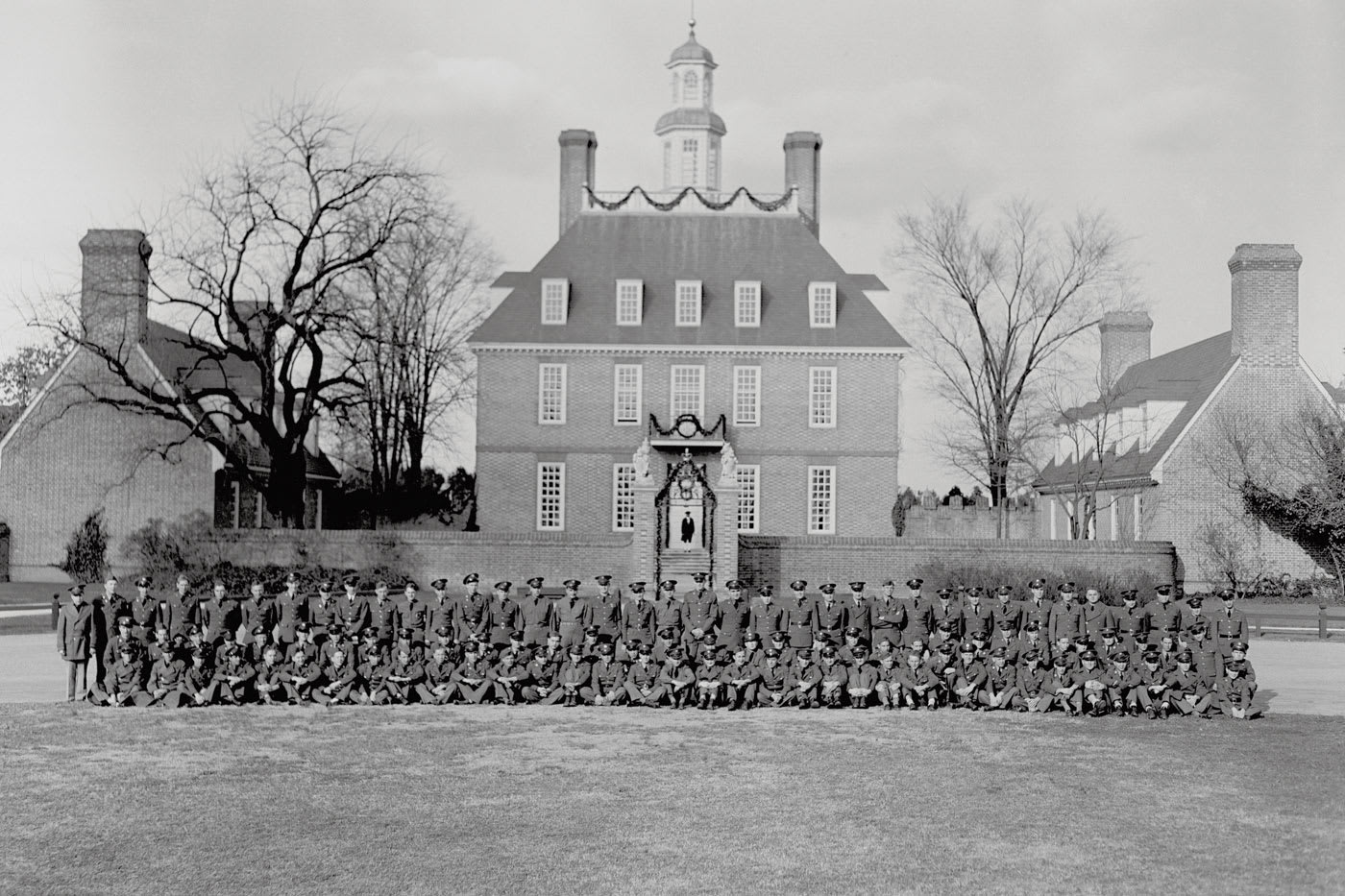Colonial Williamsburg’s benefactor, John D. Rockefeller Jr., thought of the town as a place where he and his family could escape from the modern world.
“Sunday Mrs. Rockefeller and I sat in front of the post office for a long time, and watched the people passing by,” he said in a 1941 interview with the Richmond Times-Dispatch. “And we like to walk home from the movies at night.”
That story was published on Dec. 7, 1941, the same day the Japanese attacked Pearl Harbor, and Rockefeller quickly realized Williamsburg had an opportunity to shape rather than retreat from the world.
Even before then, as Adolf Hitler and Joseph Stalin gained power in Europe, Colonial Williamsburg officials felt a responsibility to counter fascism and communism by teaching Americans the value of democracy and patriotism.
“Getting the lessons of history disseminated throughout the country is something that is beginning to be very much on the mind of all those historians who begin to feel their social responsibilities because of the general drift of things to-day,” Colonial Williamsburg historian Harold Shurtleff wrote in 1937 to Kenneth Chorley, the organization’s president.
The United States declared war four days after Pearl Harbor, and Rockefeller sponsored a Christmas dinner and dance for sailors based in Norfolk. Soon after, the Williamsburg Inn was closed to tourists and offered exclusively at a special rate for Army and Navy officers, while various colonial buildings housed servicemen and women from the many bases in nearby Newport News, Hampton and Norfolk.
Chorley had in mind more than housing or feeding or entertaining soldiers and sailors. In May 1942, he proposed to Brig. Gen. Forrest Williford, the commanding officer at Fort Eustis in Newport News, that basic training include a trip to Williamsburg.
“Our soldiers would be better fighting men,” Chorley wrote, “if they had a clearer conception of why we are in this war, and just what we are fighting to preserve.”
Teaching History — and Democracy
Rockefeller agreed to fund the program, and later that month the Army started trucking men from Fort Eustis to Williamsburg. Each day would begin with a lecture followed by tours of historic sites, each of which offered lessons about both Williamsburg and democracy. Soon the program expanded to include men and women from other bases.
A 1943 brochure given to soldiers and sailors captured the flavor of the training. The front of the brochure asked in bold letters: “Are You Filling Their Shoes?” Below that type was a picture of a pair of colonial-era shoes. Inside was a brief history of “the Shoes of Freedom” — which touched on the founding of Jamestown and Williamsburg, the fighting in the French and Indian War, and the steps that led to independence.
“The story of the Shoes of Freedom is,” the brochure proclaimed, “to a degree and in brief, the story of colonial Williamsburg. In war and in peace, we can often find in the past, the courage, strength, and inspiration with which to face the future.”
“You who wear the service shoes today are defending these same principles,” the brochure concluded. “You are defending your country with the same courage, devotion and idealism as did your forefathers who wore them in colonial days.”
Gas rationing sometimes interrupted the visits to Williamsburg, but the program continued throughout the war and brought tens of thousands of soldiers and sailors to Williamsburg.
Criticisms and Praise
Did the program actually educate and inspire the servicemen and women who came?
A survey distributed to company commanders who brought groups from Camp Peary indicated they thought the time was well spent, but it was a small sampling — only 11 commanders responded. And at least a few soldiers complained to Chorley that the program was “too G.I.” Chorley passed on the criticism to Colonial Williamsburg executives, explaining that in this case being G.I. meant that “everyone was herded into the Theatre and left to sit while the officer in charge and the man who was going to speak carried on a conversation for what seemed to the men to be hours.” Chorley was also told that some felt they had been “pushed through as a crowd of soldiers.”
Once the complaints were addressed, the comments that reached Chorley became more positive. Chorley especially liked recounting a story of a soldier from Fort Eustis he came upon in the Capitol. The soldier was staring at a portrait of George Washington painted by Charles Willson Peale in 1780.
As Chorley told it: “Suddenly I heard him mutter, ‘You got it for us, General. And, by God, we’re going to keep it!’ And he saluted.” The story greatly moved Rockefeller, Chorley said. “When I’d finished, he looked up at me, and there were tears in his eyes, and he said quietly, ‘Then it was all worthwhile.’”
Another story about the wartime program made it into Colonial Williamsburg’s publicity effort. It was a letter from Pvt. R. Friedberg, who wrote directly to Rockefeller to thank him for “the unique and wonderful way in which this visit made me realize the heritage and rich gifts of our country.
“Of all the sights I have seen, and the books I have read, and the speeches I have heard, none ever made me see the greatness of this country with more force and clearness than when I saw Williamsburg,” he wrote.
